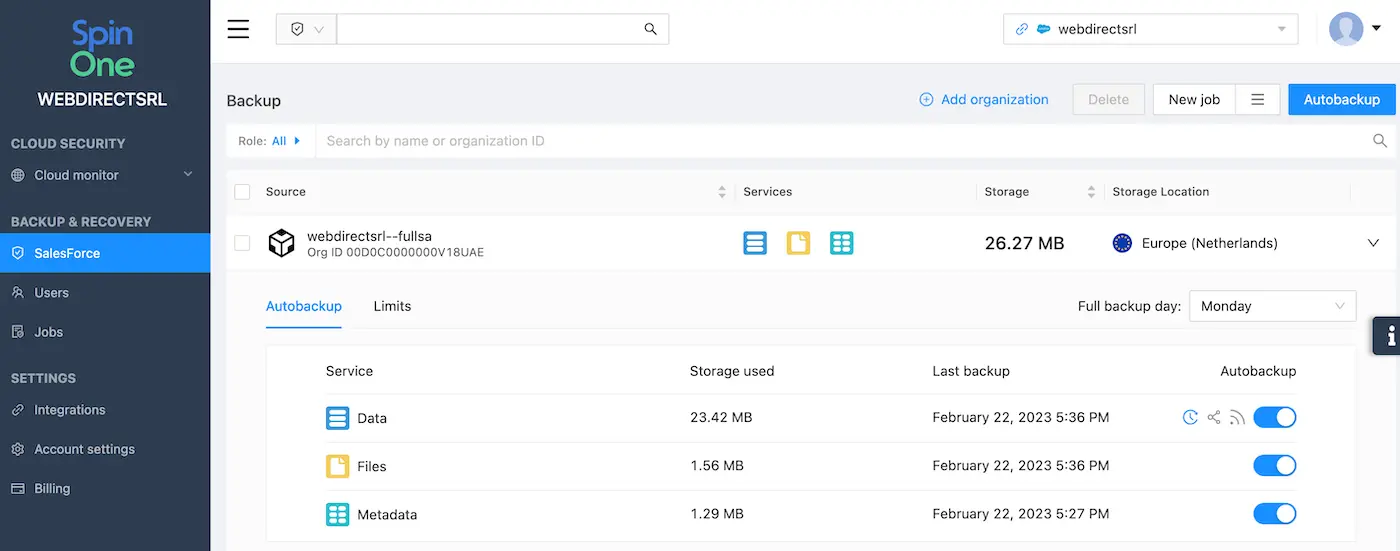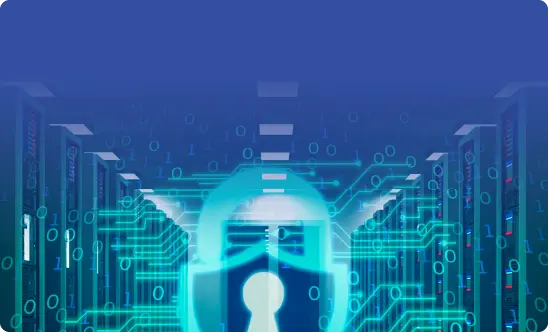Why Backup Your Team’s Salesforce Data?
Salesforce contains critical data sets for your organization’s uninterrupted revenue generation. Losing this data can permanently damage your business causing reputational and financial losses. Unfortunately, the CRM doesn’t have built-in tools that can automatically back up all types of Salesforce data. That’s why you need third-party tools to ensure your data security.
Understanding Salesforce Data
Salesforce data can be tricky to understand for people who have no prior experience with Salesforce. In this article, we try to explain Salesforce data from the standpoint of the sales process of an organization.
Salesforce data reflects the sales pipeline of a given business. Just like every company is unique so is every pipeline.
Any given pipeline has its logic. For example, each company has unique stages in which their clients go from prospects to full-fledged customers (or even resell-upsell). And even within the same organizations, not all potential clients begin at the same stage. For example, some organizations have more stages for inbound leads (i.e., those who come from websites) vs. outbound leads (i.e., targeted by sales reps directly).
Each sales organization exists to fill the sales pipeline with potential clients. Salespeople collect data on each person they interact with as well as their companies. Some of these data will be universal for all companies (like a person’s name and contact data, and the company’s name).
However, many data entries will be unique for a business. For example, a company collects data on the size of the storage premises of potential customers. This information is vital for their sales offer.
Finally, sales organizations can receive and send various files (like project specifications, agreements, etc.).
In Salesforce all this data is organized into one of three categories:
- Files – any files sent or received by the sales organization.
- Objects – types of information about the client (e.g., client’s name, telephone number, etc.)
- Metadata – stages of the sales pipeline and information about the relations between objects.
Usually, salespeople can add new files and fill out object fields for each client. However, they can’t change object’s names and how objects relate to each other. Only Salesforce Admins and developers can do it. Otherwise, it can cause massive data loss.
Risks of Not Backing up Salesforce Data
Data loss in Salesforce can happen due to several reasons:
- Users delete or edit objects or files intentionally or unintentionally.
- Developers change metadata and it breaks all the relations between the components of the pipeline.
- Add-ons and applications have a glitch or zero-day attack that causes mass editing in objects.
The implications of the data loss in Salesforce can be severe. Mass events (like items 2 and 3) can paralyze the work of the entire sales organization for several days or even weeks. Even after things get back to normal these events can weigh on the salespeople and undermine team productivity. This can severely damage the revenue generation for the company, and cause reputational and financial losses.
Usually, mass events like the ones previously mentioned can be immediately spotted and addressed. However, small events like the deletion of one account can take place under the radar.
Let’s review the following scenario. An employee leaves a company and decides to take a couple of the most prospective leads with them. They simply erase these leads from Salesforce. As their client base is passed on to the next salesperson (or other teammates), these leads fall through the cracks. The Head of Sales remembers about the leads in a couple of weeks and asks the team about them. However, the team is clueless. Meanwhile, the competitor who hired the said employee wins them over.
Finally, data loss can cause significant legal implications. Some data can be subject to mandatory retention according to the existing laws. Losing it will illicit lawsuits and legal fines.
Building a Backup Strategy
The importance of Salesforce data for the business well-being calls for a robust backup strategy. Here we will discuss how to build a Salesforce backup strategy for your business.
- Outline your budget and assign roles responsible for data backup.
- Identify the critical data sets. For example, some accounts are critical and must be backed up properly. Others – not so much. Some organizations are constantly changing their metadata. However, some companies can spend years without introducing any changes to their pipeline.
- Outline data risks. For example, businesses with significant turnover in their sales organization have higher chances of data loss due to an employee’s actions. Companies that use many add-ons and third-party apps are also more prone to data loss.
- Determine the frequency of backup that will minimize data losses in case of a major cyber event in Salesforce.
- Choose the methods and tools for backup that fit the needs of your organization and can help mitigate the existing risks.
Salesforce Backup Methods
There are several methods to back up Salesforce. Understanding them will help you choose the best one among many backup solutions.
- Manual vs. automated
Manual backups are carried out by employees, usually your salespeople or Admins. They are prone to data loss as people tend to make mistakes. Automation can significantly decrease data loss due to human error. It provides regularly scheduled backups that require no human supervision.
- Full backups vs incremental backups
Full backups are the snapshot of all the data stored in Salesforce. Incremental backups usually begin with a full backup. Afterward, they only copy the changes that have been made since the last backup. It saves backup time and storage space.
- On-premises vs. cloud-based solutions
On-premise backups store Salesforce data copies in the data storage owned and maintained by the business. Cloud-based solutions store copies in the cloud storage. They are cheaper and more secure.
- Native vs. third-party
Salesforce has several tools for backing up its data. However, none of their native solutions backs up all the types of SF data. You’ll have to acquire metadata backup, file backup, and object backup separately. Furthermore, they do not have automation in many of these tools. Third-party backups are solutions that are built to fit the needs of the company. They are usually incremental, automated, and cloud-based. And they back up all types of Salesforce data.

The Importance of Comprehensive Data Restoration
Data restoration in Salesforce is critical for businesses. There are three main data challenges associated with restoration in Salesforce.
First, not all data can be backed up. Second, not all backup solutions guarantee full restoration. Third, the recovery speed in Salesforce can be very slow.
To tackle these challenges we suggest the following steps. First, understand which types of data cannot be backed up in Salesforce and how it can impact your business in case of mass data loss.
Second, consider acquiring solutions with higher SLA. For example, Spinbackup has 99.9% SLA, which means it undertakes to recover 99.9% of your data.
Third, look for tools that use both Salesforce APIs and AI for backup and recovery. API call limitation is the main reason for slow restoration in Salesforce. Most legacy backups use only one API set. However, recently Salesforce introduced the new APIs, and newly developed tools were built around it. They can smartly utilize both API systems to provide a faster backup and recovery process.
Get the best Salesforce backup. Try Spinbackup.
Frequently Asked Questions
How often should Salesforce data backups occur?
It depends on your sales process, like the number of leads your team generates per week, the intensity of client communication, and the length of a sales cycle. On average, the recommended frequency for the Salesforce backup is once a day. However, some organizations might need to create data snapshots thrice a month.
Can backup processes affect system performance?
Cloud-to-cloud backup processes do not affect the systems.
Was this helpful?
How Can You Maximize SaaS Security Benefits?
Let's get started with a live demo
Latest blog posts
Brewing Trouble: How a Starbucks Ransomware Attack Poured Cold Wate...
Cybercriminals often carry out attacks around holidays as this helps to ensure the most amount...
Data Loss Prevention Techniques for 2025 and Beyond
It’s painstakingly clear that data loss is a major challenge facing businesses today. Our experts...
What is SaaS Security? Challenges & Best Practices
Businesses increasingly rely on Software as a Service (SaaS) for increased efficiency, collaborativeness, and scalability....


